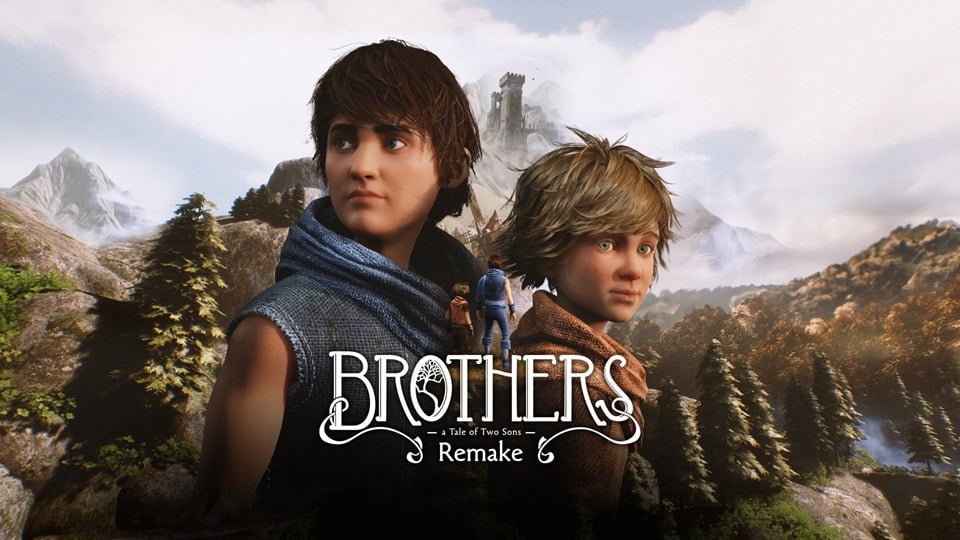Never Alone: Kisima Ingitchuna is certainly a striking game. That’s mostly thanks to its unique roots, that grew out of the very rich background of the native folk of Alaska. And while it took quite a bit of time to see this particular culture get the spotlight in a game, it was very well worth the time. I had the opportunity to ask some questions to two people who were involved in the making of the game – Dima Veryovka, the art director behind Never Alone‘s striking presentation and Alan Gershenfeld, who’s the CEO of publisher E-Line Media, the group behind its release and development.
Where did the idea of making use of Native Alaskan mythology in a game come from?
Alan Gershenfeld: The idea actually came from the Cook Inlet Tribal Council (CITC). As a pioneering Alaska Native social service organization, CITC was seeking a way to financially sustain their mission of connecting Alaska Native people to their potential. They also wanted to find an enterprise that would engage their youth and enable them to share their amazing culture with the world. One day sitting around the lunch table with her colleagues, Gloria O’Neill, President/CEO of Cook Inlet Tribal Council, said, “why not games?” Traditional stories have been used for thousands of years to pass wisdom from one generation to the next. They wanted to explore how video games could be used as a new medium for sharing, celebrating and extending their culture. Because CITC did not know how to make video games, they sought out an experienced game developer and publisher with aligned values and a shared vision – and found E-Line Media. Together we started on this journey.

Outside of the Inupiaq culture and mythology, what were the main inspirations for the story that’s told in Never Alone?
Dima Veryovka: Inupiaq people and their land was one of the main inspirations of Never Alone, besides mythology and culture. After each visit to Alaska we became increasingly inspired by the people we met, their stories, and the ideas they gave us for the game. They helped us better understand their core values and the importance of their interdependent relationship between themselves and nature.
The characters, themselves, were inspired by Arctic dolls. We tried to give them a very authentic hand crafted feel to make them look like somebody sewed them using fur, skin, and ivory. The Arctic tundra was also one of the essential sources we drew from. After traveling to Barrow and seeing the huge, frozen, open land accompanied by a silky pink sky on the horizon, we had the idea of creating the game with the same atmospheric, soft look that captures the beauty of the tundra.
Never Alone was rendered using a lot of pastel, desaturated colors, which helped us create very moody, dreamlike visuals, while still portraying an authentic and believable Arctic world.
Violence, sadly enough, is something that’s a big part to most videogames nowadays, so how hard was it to avoid making use of it in Never Alone?
Dima: It wasn’t hard at all. During our careers, almost all of us had worked on games involving a lot of violence. Before we started this project we made it very clear that this is not the direction we want to go in. We all wanted to create a game with a meaningful experience that will appeal to everyone, from young teens to adults who grew up playing classic platform-style games. We believe that fans of such games, including traditional platformers such as Rayman and Mario, and indie puzzle platformers like Limbo, Braid, Fez and Trine, will love cultural games with beautiful environments, and carefully crafted levels and puzzles.
Never Alone‘s cooperative gameplay is simple and works extraordinarily well. How was it developed? Were there many changes to its implementation during the game’s creation process?
 Alan: The game is a 1 or 2 player co-op game with both Nuna and the Fox having to work together to advance in the game, reinforcing the theme of interdependence – a very important value of the Inupiaq. The game is really fun when played with two players together; one as Nuna and the other as the Fox. The team had to work hard to make both characters unique in their abilities (e.g. Nuna can climb ladders, throw a bola and Fox can squeeze in tight areas, jump higher and summon Spirit helpers) but also have their skills seem natural and complement each other to solve puzzles and advance in the game. This was a process of continual refinement and testing.
Alan: The game is a 1 or 2 player co-op game with both Nuna and the Fox having to work together to advance in the game, reinforcing the theme of interdependence – a very important value of the Inupiaq. The game is really fun when played with two players together; one as Nuna and the other as the Fox. The team had to work hard to make both characters unique in their abilities (e.g. Nuna can climb ladders, throw a bola and Fox can squeeze in tight areas, jump higher and summon Spirit helpers) but also have their skills seem natural and complement each other to solve puzzles and advance in the game. This was a process of continual refinement and testing.
There was much discussion around what animal should go on the journey with Nuna – as the Alaska Native people have a spiritual relationship with a wide range of animals that both provide them companionship and help them survive in the environment. Early in development, the team modeled are and animations for a wolf companion, but ultimately decided to go with an arctic fox companion because if felt more balanced in terms of both narrative and coop gameplay with Nuna.
Are there other aspects of the Inupiaq culture that you weren’t able to include in the game that you would like to see shown to the public in some other fashion?
Alan: Over thousands of years, Alaska Native people have lived and worked together in one of the world’s harshest environments, learning and passing down knowledge, skills and values that have kept communities viable and self-sufficient over time.
All of the core game mechanics were inspired by Alaska Native traditional stories, themes and the Inupiaq culture. Key themes that informed the gameplay included interdependence, resiliency and inter-generational exchange – all core Inupiaq values.
The narrative of the game is inspired by a story told by Robert Nasruk Cleveland, called Kunuuksaayuka. It is a story about an endless blizzard. CITC worked with Minnie Gray, Cleveland’s eldest child, to gain permission to tell the story and modify it for the video game. The endless blizzard story provides the spine of the game narrative, and other recurring themes from traditional Inupiaq stories were woven into the game.
The game also features 24 mini-documentaries which we call ‘cultural insights’ that get unlocked through the game. These feature interviews with Alaska Native elders and storytellers and provide insights into many aspects of Inupiaq culture.
Seeing the warm reception Never Alone has been receiving from the public since its release, is making more games within this theme something you would like to do further on?
 Dima: Absolutely. Since we released the very first trailer for the game, we’ve been approached by cultures – and game development teams – all over the world interested in making games that celebrate, share and extend a great variety of cultures from around the world. We are currently in discussions with multiple groups as we explore other possible cultures to partner with for a new game. The key is to find partners that are eager to build a deep foundation of trust and who are excited to go on a journey together of collaborative ‘inclusive development’.
Dima: Absolutely. Since we released the very first trailer for the game, we’ve been approached by cultures – and game development teams – all over the world interested in making games that celebrate, share and extend a great variety of cultures from around the world. We are currently in discussions with multiple groups as we explore other possible cultures to partner with for a new game. The key is to find partners that are eager to build a deep foundation of trust and who are excited to go on a journey together of collaborative ‘inclusive development’.
Thank you very much for your time. And a special one for bringing out the game.




